Orange County Convention Center Launches New Innovative Virtual Executive Studio
By Nadia Vanderhoof, MA
The Orange County Convention Center (OCCC) in Orlando has announced the launch of its new state-of-the-art digital broadcast center for hybrid conventions and tradeshows, the OCCC Executive Studio.
Conventions and trade shows of every size can access digital equipment solutions to produce innovative and scalable 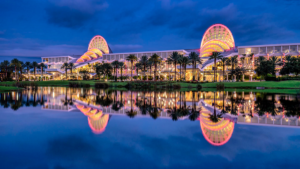 hybrid events. Developed in partnership with LMG, the OCCC’s on-site preferred audiovisual partners since 1998, the OCCC Executive Studio will allow customers to execute their event remotely, while connecting to their audiences, speakers, and presenters through extraordinary audiovisual experiences.
hybrid events. Developed in partnership with LMG, the OCCC’s on-site preferred audiovisual partners since 1998, the OCCC Executive Studio will allow customers to execute their event remotely, while connecting to their audiences, speakers, and presenters through extraordinary audiovisual experiences.
“The OCCC is excited to provide a variety of custom and unique virtual solutions for our clients,” said OCCC Executive Director Mark Tester. “Our expertise in leading safe conventions, combined with our customer service excellence and innovative technology offerings, makes the OCCC Executive Studio an ideal venue for hybrid events.”
From extensive conferences to board meetings, the OCCC Executive Studio options will allow clients to host their event remotely using flexible and interactive tools that integrates both new and familiar technologies. With an in-depth knowledge of the facility and a state-of-the-art equipment inventory, the OCCC can connect organizers with LMG, preferred audiovisual partner of the OCCC, to broadcast an array of educational and breakout sessions, alongside other virtual needs.
The OCCC Executive Studio will be based out of the Lecture Hall in the West Building of the Center and features classroom-style seating to accommodate a physically distanced audience, while providing a customizable canvas for lighting, AV and digital solutions. This offering includes a fully equipped studio that combines the benefits of the venue’s space and the audiovisual company’s virtual solutions. The studio will be available for booking starting early 2021.
“Our mission is to go beyond technology by providing innovative solutions through an unparalleled approach to quality, service and support,” said President and CEO of LMG Les Goldberg. “Producing an immersive convention from a virtual reality environment with your content is easily within reach at the OCCC Executive Studio.”
Meeting planners will also have the option of using the Linda W. Chapin Theatre, which has a 97,000-watt audio system, extensive in-house lighting offerings and a full proscenium stage with fly system. The cutting-edge Destination Lounge, in the North-South Building, is also available for use as a virtual studio and provides a technology-focused sophisticated environment – perfect for any forward-thinking virtual meeting. For more information about booking the OCCC Executive Studio, visit www.occc.net.
Nadia Vanderhoof, MA, is Marketing and Communications Manager | Marketing and Communications Division at the Orange County Convention Center.
Cleveland Cavaliers and Rocket Mortgage FieldHouse Partner with SeatGeek to Create Next Generation
By Zack Yohman
The Cleveland Cavaliers announced a marquee partnership with SeatGeek that will see the technology platform take over as ticketing provider for all future events at Rocket Mortgage FieldHouse. SeatGeek’s fan-first approach will provide attendees with a new, dynamically-expanded experience, while delivering additional tooling to help further ensure a safe return to live, ticketed events at the FieldHouse.
As the new ticketing provider for Rocket Mortgage FieldHouse, SeatGeek will take over ticketing all games for the 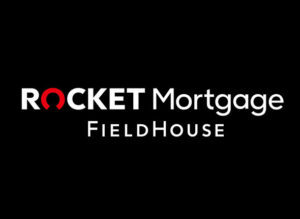 Cleveland Cavaliers (NBA), Cleveland Monsters (AHL), Cavs Legion (NBA2K), as well as concerts and other events that come through the venue, which is one of the busiest in the country. In addition, SeatGeek will ticket all Canton Charge (NBA G League) games at the Canton Civic Center in nearby Canton, Ohio.
Cleveland Cavaliers (NBA), Cleveland Monsters (AHL), Cavs Legion (NBA2K), as well as concerts and other events that come through the venue, which is one of the busiest in the country. In addition, SeatGeek will ticket all Canton Charge (NBA G League) games at the Canton Civic Center in nearby Canton, Ohio.
SeatGeek’s best-in-class technology is already loved by fans across the country, making it easier than ever before for fans to purchase tickets and attend the events they love. From a uniquely simple purchase and transfer flow, to an app-based personalized gameday experience that allows fans to do everything from book a ride to the game to purchase food and beverage from their seats, SeatGeek is constantly focused on innovating the fan experience.
“SeatGeek has a similar DNA to our organization – we both put the fan experience above everything else,” said Cleveland Cavaliers President of Business Operations Nic Barlage. “We believe technology is a core part of our future as well, and SeatGeek is an ideal partner to bring an elevated, dynamic and safe experience to our fans as events return to Rocket Mortgage FieldHouse.”
With hundreds of events a year, Rocket Mortgage FieldHouse is the busiest arena to partner directly with SeatGeek, which currently tickets many global teams and venues including the Dallas Cowboys, Seattle Sounders, State Farm Stadium, Liverpool FC, and many West End theatres in London. In addition, SeatGeek has partnered directly with the National Football League and Major League Soccer.
Outside of the fan benefits, the teams and performers coming through Rocket Mortgage FieldHouse will find a suite of services to help them enhance their events and maximize revenue. Tools like real-time analytics, seating chart heatmaps and customizable mobile tickets will make it easy for the Cavaliers, Monsters, promoters, and event operators to manage the many events taking place. In addition, SeatGeek’s suite of COVID-19 response solutions – SeatGeek Adapt – will help fans safely return to events with tools that help maintain social distancing throughout the venue, understand COVID-19 attendance protocols, and more.
“As someone who grew up in Cleveland and attended hundreds of Cavs games as a kid, it’s a highlight of my career to now get to work alongside the team and city that I love,” said SeatGeek CEO and Co-Founder Jack Groetzinger. “I know how passionate the fans are in Cleveland, and I can’t wait to get back to a game using SeatGeek’s platform.”
Zack Yohman is Director of Business & Strategic Communications for Cavaliers Operating Company, LLC.
TCF Center Receives 2020 Leadership Award from U.S. Green Building Council
by Mary Klida
Claude Molinari, general manager of ASM Global/TCF Center, announced TCF Center is among 10 companies, projects and individuals receiving a 2020 U.S. Green Building Council (USGBC) Leadership Award.
The annual awards recognize exceptional work advancing sustainable, healthy, resilient and equitable buildings, cities 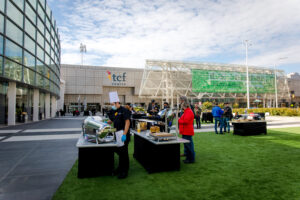 and communities. USGBC presented the award on Thursday, Nov. 12, at 5 p.m. EST during the closing event at the annual Greenbuild Virtual conference. TCF Center is the only convention center in the United States receiving the award this year.
and communities. USGBC presented the award on Thursday, Nov. 12, at 5 p.m. EST during the closing event at the annual Greenbuild Virtual conference. TCF Center is the only convention center in the United States receiving the award this year.
The 2020 recipients represent leaders who are driving the adoption of Leadership in Energy and Environmental Design (LEED) across business portfolios, higher education and green affordable housing, as well as helping to advance Environmental, Social and Governance (ESG) performance, resilience planning and innovative waste management solutions. TCF Center has been growing its green initiatives for a decade. By organizing its green event program and sustainable operations protocols the venue continually adapts to the global advancements in facility and event sustainability.
“We realize that the TCF Center is an economic engine for the Detroit community,” Molinari said. “We take this responsibility seriously and do everything we can to include the local and event communities in our efforts to hit as many of the UN Sustainable Development Goals as we can each year, reducing our carbon footprint and enriching the lives of residents and visitors.”
TCF Center is a 2.4-million-square-foot convention center in downtown Detroit that achieved LEED Gold in October 2019 under LEED v4.1 O+M. It is one of only a few convention centers in the world to certify under that rating system. TCF is a high-performing green building, and the team is dedicated to ongoing performance measurement through Arc. It invests in educating employees, vendors, customers, partners and visitors on its efforts and the importance of sustainable practices.
The center is also a steward of human health and in response to this year’s pandemic, was designated an alternate care site where it remains prepared to provide medical care space for the overflow of local Detroit hospitals. It continues to clean and sterilize PPE for local hospitals, has distributed 2.5 million pounds of food to the local Detroit community from its docks in partnership with Food Rescue US and is periodically a site for Red Cross blood drives as needed.
For more than a quarter century, USGBC has been defining global standards for designing, constructing and operating healthy, resilient and sustainable buildings and spaces through LEED. LEED is the world’s most widely used green building rating system and promotes strategies that reduce environmental impact, enhance human health and support economic development. USGBC’s Leadership Award recipients are a model for how LEED and other sustainability practices can be used to improve communities, support business, and contribute to a better future for all.
The USGBC said in a statement, “This year’s Leadership Award recipients are a model for how LEED and other sustainability practices can be used to improve communities, support business, and contribute to a better future for all.”
Mary Klida, is Senior Marketing & Communications Manager for TCF Center.
30|UNDER|30 Spotlight: Marina Jaramillo
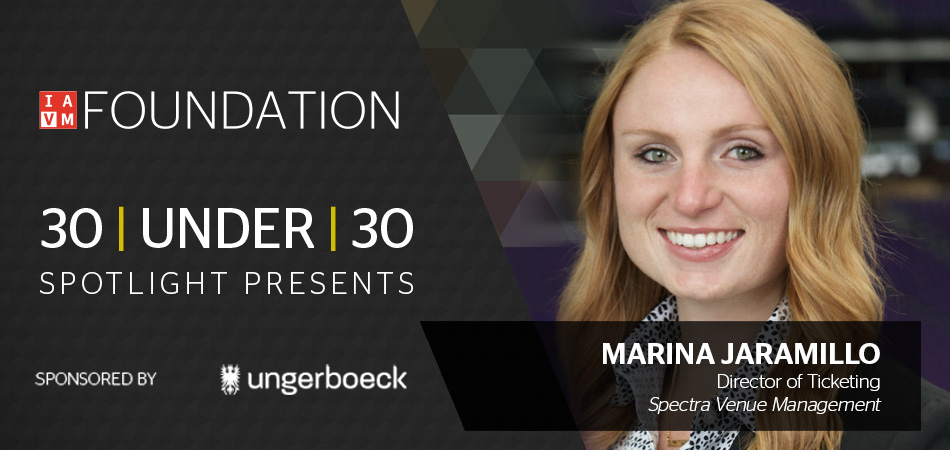
Director of Ticketing, Spectra Venue Management
Marina Jaramillo is passionate about and finds deep fulfillment in working in the Ticketing Industry. Whether it’s building shows, managing on-sales, greeting customers, implementing policies and procedures, or traveling to assist other venues; she relishes the opportunity to provide a positive experience to promoters, guests, and employees.
Having worked at an array of venues, she takes pride in being courageous and innovative with each new task various markets bring. Like many, she doesn’t believe she chose the dream of working in the entertainment industry, rather the dream chose her. Marina strives to perpetually impact the future of the Ticketing and Event Industry by driving strategy and innovation.
“After a challenging few months, being named to the 30|UNDER|30 Class of 2020 was a positive reminder that hard work and determination always matter in the long run to accomplishing and achieving your goals.”
Join your Foundation in congratulating Marina on being honored as one of the 30|UNDER|30 Class of 2020 and don’t forget to come back each Thursday as we spotlight another honoree!
A Warm Welcome To Our Newest Members
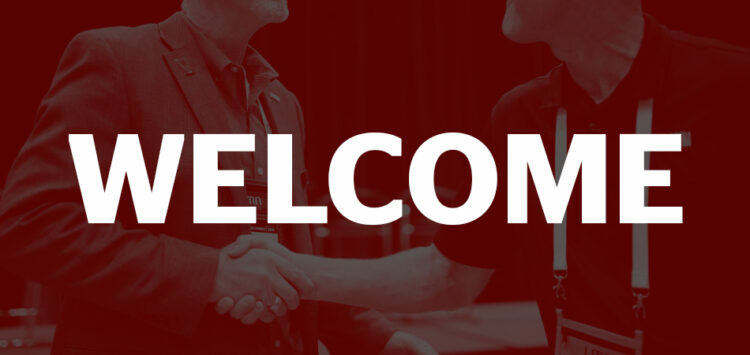
Please welcome our newest members who joined IAVM in October 2020. Thank you for being a part of the association! Also, let us get to know you better by participating in the I Am Venue Management series. Please visit http://www.iavm.org/i-am-venue-management-share-your-story to share your story and photo.
Aymen Al-Ani, Walter E Washington Convention Center, Washington, DC, United States
Alex Arellano, American Airlines Center, Dallas, TX, United States
Alyssa Blumling, PPG Paints Arena, Pittsburgh, PA, United States
Catelyn Booth, Arizona State University, Tempe, AZ, United States
Sheila Brannock, SAP Center at San Jose, San Jose, CA, United States
Charles Burge, Indiana University, Bloomington, IN, United States
Ruben Burgess, Dolby Theatre, Hollywood, CA, United States
Jon Carvell, First National Bank Arena, State University, AR, United States
Ashley Christopher, Kings Theatre, an Ambassador Theatre Group venue, Brooklyn, NY, United States
Johnny Cooper, Genatek Global, LLC, Flint, MI, United States
William Corder, Las Vegas Ballpark, Las Vegas, NV, United States
Joshua Curtis, Washington State Major League Baseball Stadium Public Facilities District, Seattle, WA, United States
Jon DeMarco, PPG Paints Arena, Pittsburgh, PA, United States
Adarryll Dent, Renasant Convention Center, Memphis, TN, United States
Patrick Doherty, SAP Center at San Jose, San Jose, CA, United States
Kate Dordick, PPG Paints Arena, Pittsburgh, PA, United States
Karen Duncan, Segerstrom Center for the Arts, Costa Mesa, CA, United States
Steve Ebner, Oregon Convention Center, Portland, OR, United States
Amy Forgerson, Kennesaw State University, Kennesaw, GA, United States
Eric Gold, SAP Center at San Jose, San Jose, CA, United States
David Handwork, First National Bank Arena, State University, AR, United States
Francine Harris, American Airlines Center, Dallas, TX, United States
Michelle Hedegard, Oregon Convention Center, Portland, OR, United States
Tyler Higgins, Allen Event Center, Allen, TX, United States
Kristen Hoover, Fayetteville Public Library, Fayetteville, AR, United States
Michael Johnson, Mesa Arts Center, Mesa, AZ, United States
Seth Kagy, Navy Pier, Inc., Chicago, IL, United States
Sharlene Lambert, Allen Event Center, Allen, TX, United States
Jason Lemiere, SAP Center at San Jose, San Jose, CA, United States
Hannah Lowney, Minnesota Orchestra, Minneapolis, MN, United States
Jarod Matheney, First National Bank Arena, State University, AR, United States
Natalia McDonough, Oregon Convention Center, Portland, OR, United States
Matt McInnis, American Airlines Center, Dallas, TX, United States
Marie McLean, Oregon Convention Center, Portland, OR, United States
Khaly Merot, Chase Center, San Francisco, CA, United States
Michael Miller, Segerstrom Center for the Arts, Costa Mesa, CA, United States
Melissa Mitro, PPG Paints Arena, Pittsburgh, PA, United States
Brian Mulligan, Bohemian Foundation, Fort Collins, CO, United States
Jasmine Noldon, American Airlines Center, Dallas, TX, United States
Mike Oberst, PPG Paints Arena, Pittsburgh, PA, United States
Shelby O’Neal, American Airlines Center, Dallas, TX, United States
Darcy Pease, Chase Center, San Francisco, CA, United States
Morgan Pitman, Chase Center, San Francisco, CA, United States
Joel Poppert, Artis-Naples, Naples, FL, United States
Brittany Roberts, Kennesaw State University, Kennesaw, GA, United States
Jeff Rodgers, American Airlines Center, Dallas, TX, United States
Jaime Rosner, Capital One Arena, Washington, DC, United States
Jamie Saul, Destin-Fort Walton Beach Convention Center, Fort Walton Beach, FL, United States
Lindsay Scherer, Baltimore Convention Center, Baltimore, MD, United States
Andy Silverman, American Airlines Center, Dallas, TX, United States
Adrian Silverstein, Enterprise Center/Stifel Theatre, Saint Louis, MO, United States
Reginald Smith, Walter E Washington Convention Center, Washington, DC, United States
Jordan Smyth, Segerstrom Center for the Arts, Costa Mesa, CA, United States
Marina Soffer, Capital One Arena, Washington, DC, United States
Megan St John, Lyric Opera of Chicago, Chicago, IL, United States
Dallas Stark, American Airlines Center, Dallas, TX, United States
Lisa Strong, Oregon Convention Center, Portland, OR, United States
Cori Talbot, The River View at Occoquan, Alexandria, VA, United States
Matthew Tamindzija, Chase Center, San Francisco, CA, United States
Rosco Thomas, Bush Convention Center, Midland, TX, United States
Sarah Tisinger, Bohemian Foundation, Fort Collins, CO, United States
Kelly Vickers, Walter E Washington Convention Center, Washington, DC, United States
Lorenzo Vigliante, American Airlines Center, Dallas, TX, United States
Brenda Walker, Kirkegaard, Chicago, IL, United States
Sheena Way, Chase Center, San Francisco, CA, United States
Jeff White, American Airlines Center, Dallas, TX, United States
Joshua Williams, Oregon Convention Center, Portland, OR, United States
Nicki Wilmot, Segerstrom Center for the Arts, Costa Mesa, CA, United States
Terry Wilson, Southern Methodist University, Melissa, TX, United States
Do you want to receive a Front Row News weekly digest?
Categories
- Allied (861)
- Architecture (147)
- Arenas (747)
- Career (897)
- Convention Centers (895)
- Education (623)
- Events (1,544)
- Food & Beverage (193)
- Foundation (113)
- Guest Experience (1,496)
- Industry News (2,270)
- Leadership (1,888)
- Marketing (150)
- Membership (2,000)
- Music (213)
- Performing Arts Centers (454)
- Professional Development (409)
- Research (127)
- Safety & Security (442)
- Sports (763)
- Stadiums (608)
- Student (159)
- Technology (516)
- Ticketing (92)
- Touring (82)
- Trends (364)
- Uncategorized (741)
- Universities (218)
- Video (25)
- Young Professional (198)
Twitter Feed
- Twitter feed loading
Recent Posts
- Peggy Daidakis Humbly Made Convention Center History
- Welcome to Our Newest Members
- New Member Benefit! IAVM Partners with Advantage Training to Elevate Staff Readiness and Guest Experience
- Charlotte Convention Center Welcomes Two New Leaders to its Management Team
- Fort Worth Cuts Ribbon on Phase 1 of Convention Center Expansion
Categories
- Allied
- Architecture
- Arenas
- Career
- Convention Centers
- Education
- Events
- Food & Beverage
- Foundation
- Guest Experience
- Industry News
- Leadership
- Marketing
- Membership
- Music
- Performing Arts Centers
- Professional Development
- Research
- Safety & Security
- Sports
- Stadiums
- Student
- Technology
- Ticketing
- Touring
- Trends
- Uncategorized
- Universities
- Video
- Young Professional
Archives
- December 2025
- November 2025
- October 2025
- September 2025
- August 2025
- July 2025
- June 2025
- May 2025
- April 2025
- March 2025
- February 2025
- January 2025
- December 2024
- November 2024
- October 2024
- September 2024
- August 2024
- July 2024
- June 2024
- May 2024
- April 2024
- March 2024
- February 2024
- January 2024
- December 2023
- November 2023
- October 2023
- September 2023
- August 2023
- July 2023
- June 2023
- May 2023
- April 2023
- March 2023
- February 2023
- January 2023
- December 2022
- November 2022
- October 2022
- September 2022
- August 2022
- July 2022
- June 2022
- May 2022
- April 2022
- March 2022
- February 2022
- January 2022
- December 2021
- November 2021
- October 2021
- September 2021
- August 2021
- July 2021
- June 2021
- May 2021
- April 2021
- March 2021
- February 2021
- January 2021
- December 2020
- November 2020
- October 2020
- September 2020
- August 2020
- July 2020
- June 2020
- May 2020
- April 2020
- March 2020
- February 2020
- January 2020
- December 2019
- November 2019
- October 2019
- September 2019
- August 2019
- July 2019
- June 2019
- May 2019
- April 2019
- March 2019
- February 2019
- January 2019
- December 2018
- November 2018
- October 2018
- September 2018
- August 2018
- July 2018
- June 2018
- May 2018
- April 2018
- March 2018
- February 2018
- January 2018
- December 2017
- November 2017
- October 2017
- September 2017
- August 2017
- July 2017
- June 2017
- May 2017
- April 2017
- March 2017
- February 2017
- January 2017
- December 2016
- November 2016
- October 2016
- September 2016
- August 2016
- July 2016
- June 2016
- May 2016
- April 2016
- March 2016
- February 2016
- January 2016
- December 2015
- November 2015
- October 2015
- September 2015
- August 2015
- July 2015
- June 2015
- May 2015
- April 2015
- March 2015
- February 2015
- January 2015
- December 2014
- November 2014
- October 2014
- September 2014
- August 2014
- July 2014
- June 2014
- May 2014
- April 2014
- March 2014
- February 2014
- January 2014
- December 2013
- November 2013
- October 2013
- September 2013
- August 2013
- July 2013
- June 2013
- May 2013
- April 2013
- March 2013
- February 2013
- January 2013
- May 2012
- March 2012
- December 2011
- November 2011
- October 2011
Recent Comments
- Frank Bradshaw, Ph.D., CVE on John Meyer, CVE, a Tireless Advocate of Certification for Venue Professionals, Has Died
- Neil Sulkes on Hilary Hartung, Friend to Many in Venue Marketing, Has Left Us
- Jason Parker, CVE on The Devastation of Hurricane Helene and How We Can Support One Another
- Larry Perkins on Touhey Testifies Against Speculative Ticketing Before Congressional Subcommittee
- Peter Secord on Major Players for Planned Elkhart Amphitheater Were in the Mix at VenueConnect
